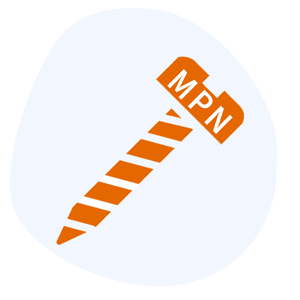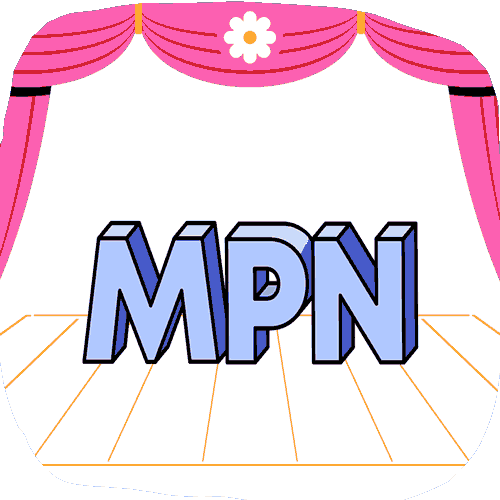CA: Sedgwick Stiffs Doctor Who Treated Injured Honda Worker
.gif)
The Medical Provider Network (MPN) system in California is chaos — and chaos breeds the kind of abuse that is currently crippling workers’ comp.
Case in point: Third-Party Administrator (TPA) Sedgwick Claims Management Services, acting on behalf of American Honda Motor Corporation, recently denied payment to a doctor for treating an injured worker. Sedgwick denied payment based on MPN non-participation, even though Honda does not currently maintain an approved MPN.
In this case, Sedgwick provides a perfect example of what makes the MPN system a 10-year grift, one that has cheated doctors out of payment in two primary ways:
- Rampant, demonstrably improper denials for MPN non-participation, which the doctor has no reasonable mechanism by which to dispute
- Preferred Provider Organizations (PPOs) using the threat of MPN exclusion to cajole doctors into signing discount reimbursement contracts
Below we demonstrate how Sedgwick and Honda improperly denied payment citing non-participation in a terminated MPN. Worse, the doctor has no feasible recourse to claim the reimbursement owed, because the appeals system in California has a built-in dead end for disputes involving MPN participation.
Indisputably, California has allowed MPNs to function as a mechanism for transferring hundreds of millions of dollars in reimbursement owed per the Official Medical Fee Schedule (OMFS), from providers to PPOs. daisyBill data demonstrates that in 2022, on average, PPO ‘savings’ have cost providers roughly 18% of the reimbursement owed to daisyBill doctors per the OMFS.
As one workers’ comp executive explained:
“California distracts employers with the bogey of supposedly ‘fraudulent’ doctors making workers’ comp costs skyrocket. Each year, California legislators pass ‘solutions’ to this ‘fraud,’ which are nothing more than a boondoggle for third-party vendors to feast on employers’ workers’ comp premiums, while continuing to blame doctors for high medical costs.”
This series of articles shows how claims administrators use MPNs to unjustifiably drain revenue from the doctors willing to treat injured workers. As Warren Buffett said, “It’s only when the tide goes out that you learn who’s been swimming naked.” As the MPN tide recedes, there will be quite a few bare bodies on display.
Sedgwick: 2022 MPN Denial Champion
In 2022, Sedgwick has denied payment to daisyBill doctors citing MPN non-participation 7,947 times.
Far too often, when we investigate these MPN denials, we find that the insurer or employer does not maintain an MPN. Sedgwick — a TPA, not an insurer or employer — denies payment for non-participation in MPNs that either:
- Never existed
- Exist but are suspended, terminated, or withdrawn
Let’s be clear: Per California Labor Code, that is the “exclusive right” of the insurer or employer paying for the workers’ treatment. Yet TPAs like Sedgwick routinely take advantage of the MPN chaos described below to (improperly) deny payment, by claiming the doctor is outside the (often non-existent or inapplicable) network.
Sedgwick False MPN Payment Denial - American Honda Motor Co.
In the Explanation of Review (EOR) below, Sedgwick denies payment for the treatment of an American Honda Motor Co. employee due to MPN non-participation, claiming “SERVICE WAS PERFORMED BY PROVIDER OUTSIDE THE CLIENT’S MPN NETWORK.”
A search of the Division of Workers’ Compensation (DWC) MPN database shows that the only MPN maintained by Honda is terminated (MPN Approval Status: T).
Unless the doctor submits a Second Review appeal within 90 days of receipt of the payment denial, California law allows Sedgwick/Honda to keep the falsely denied payment. However, Sedgwick routinely, improperly denies Second Review appeals as duplicate bills; in 2022, Sedgwick denied over 9,153 valid Second Review appeals from daisyBill clients as duplicate bills.
Then comes the revenue-killing twist: After Sedgwick falsely denies the Second Review appeal, the doctor cannot pursue Independent Bill Review (IBR), because IBR only resolves fee schedule disputes regarding the correct amount owed. This dead-end in the appeals process precludes doctors from challenging false denials based on MPN non-participation.
Below is an example from Travelers, in which the DWC ruled a similar MPN dispute ineligible for IBR. Once Sedgwick falsely denies the Second Review appeal, payment is forfeit — unless the doctor hires an attorney and pays $150 to file a lien with the Workers’ Compensation Appeals Board (WCAB).
Since there are no adverse consequences for Sedgwick (or Honda) for this false MPN denial, Sedgwick saved Honda a buck by stiffing the doctor who treated Honda’s employee. This, of course, seems to ignore the bleak long-term consequences for Honda’s injured workers: doctors abandoning workers’ comp.
We also wonder:
- Does Sedgwick charge Honda for maintaining the terminated MPN listed above?
- Does Sedgwick also take a percentage of the unwarranted “MPN savings” from the doctor caring for Honda’s injured worker?
The DWC MPN List: Chaos Defined
The MPN system is effectively unmanaged by any central authority, creating a Wild-West scenario rife with opportunities for claims administrators to falsely deny reimbursement without consequence (as demonstrated repeatedly by Sedgwick, Employers, and other claims administrators).
Moreover, it’s often virtually impossible for doctors to determine which of the 2,477 MPNs (if any) applies to a given injured worker and whether or not the doctor is a member. California Labor Code Section 4616 mandates that:
In developing a medical doctor network, an employer or insurer shall have the exclusive right to determine the members of their network. [emphasis added]
In other words, California allows insurers and self-insured employers to establish MPNs to restrict access to care — and to withhold payment from non-MPN doctors. To avoid MPN payment denials, the doctor must determine both if an MPN applies to a given patient and if the doctor is a member of the applicable MPN.
To make this determination, the doctor needs answers to the following questions about the injured worker’s employer’s workers’ comp insurance:
- Is the employer self-insured?
- If not, what is the name of the insurer?
- If yes, is the employer self-insured individually or as a member of a self-insured employers’ group or Joint Powers Authority (JPA)?
- If the latter, what is the name of the employers’ group or JPA?
Once the doctor establishes the employer’s insurance coverage, the doctor must search the Division of Workers’ Compensation (DWC) list of 2,477 approved MPNs for the name of the insurer or employer.
Buckle up and don your helmet; the DWC MPN list is a wreck, as indicated by the following:
- When an MPN is approved, the ‘MPN Status’ field is blank
- 2,133 of the 2,477 MPNs are terminated, withdrawn, or suspended, leaving only 344 (14%) of MPNs approved.
- Only when the ‘Type of Applicant’ is listed as ‘Insurer,’ ‘Self-Insured Employer,’ ‘Group of Self-Insured Employers,’ ‘Joint Powers Authority,’ or ‘State’ is the MPN maintained by an organization with the right to restrict care (Employer/Insurer MPN count: 193)
- When the ‘Type of Applicant’ is an ‘Entity that provides physician network services,’ the MPN is maintained by a vendor that services insurers and employers, not an insurer or employer with the legal right to restrict care (Vendor Active MPN count: 151)
- Some insurers maintain multiple MPNs (e.g., Zurich Insurance filed for a whopping 82 MPNs, Ace American Insurance follows closely behind with 77 MPNs, etc.)
- The DWC provides no termination, withdrawal, or suspension dates for formerly approved MPNs.
- The DWC only periodically updates its MPN list.
- California regulations require insurers and employers to update the list of approved MPN doctors only four times annually.
Essentially, the DWC List of Approved MPNs is unreliable, to say the least.
MPNs — or at least the current, chaotic, unmanaged, and frequently abused MPN system in place — harm California workers’ comp. Unfortunately, for injured workers and their employers, that harm is extremely profitable for certain workers’ comp vendors.
Protect your practice. Harness the power of daisyBill software, data, and expertise for faster, better workers’ comp billing. Reach out to learn how we can help.
CONTACT US
DaisyBill provides content as an insightful service to its readers and clients. It does not offer legal advice and cannot guarantee the accuracy or suitability of its content for a particular purpose.




.gif)

Question: The Explanation of Review (EOR) contains false and misleading information, possibly fraudulent and misleading information.. It appears that Sedgwick and Honda knowingly and willfully denied the claim in Bad Faith. .. Fraud destroys the validity of everything it enters into, Isn't that Right?
Once a stamp was put on that envelope and it was mailed out, it became a Federal Offense ( Mail/Wire Fraud?), isn't that also Right?
With Sedgwick's long history of denying claims in Bad Faith, how many acts of documented mail fraud are there.???
It appears that Sedgwick and their clients deny ( in Bad Faith) the Healthcare Providers claims to enrich themselves at the injured workers and Healthcare Providers expense.
Hey Helpful Honda People, help your injured workers get the treatment they need to get back to being productive members of society!